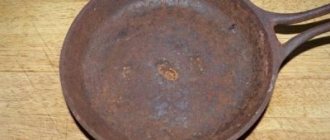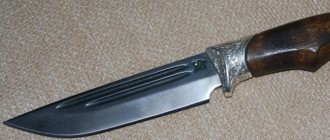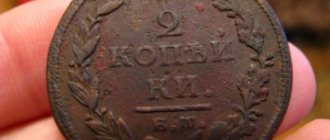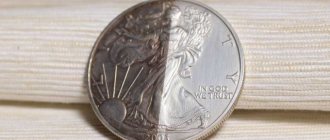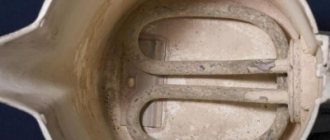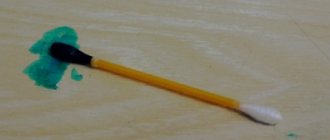During operation or improper storage, cast iron can corrode.
How to clean rust from cast iron at home?
You can remove rust from a cast iron surface using folk recipes (using soda, salt, vinegar and other means) and using special commercial compounds designed to combat rusty deposits.
Why does it rust and how to resist it?
Cast iron can be edible or non-edible. The latter is a fairly expensive material. In everyday life, cast iron products can be found most often in the kitchen. Particularly popular are frying pans and cast iron pots - rounded containers for preparing dishes in Russian stoves and ovens.
Corrosion of the material is most often associated with violation of operating rules and poor-quality manufacturing materials. Prolonged contact with moisture causes the metal surface to begin to rust.
If a product is manufactured in violation of technology, is light in weight, has a non-uniform surface with inclusions, such a thing will not serve well.
In an effort to preserve cast iron cookware, you should follow these rules:
- Do not leave leftover food in the container.
- After washing the dishes, wipe them dry.
If cast iron begins to rust, you should immediately take measures to clean it. You can find out how to clean, for example, a cast iron frying pan here.
Features of preparation for use
After purchasing new cast iron cookware, you need to perform a number of steps to prepare it for use. To avoid rust, the surface should be slightly oily. To do this, it is recommended to do the following:
- First, the frying pan must be thoroughly washed. To do this, you should use soap or detergent.
- Wipe the item dry.
- Pour vegetable oil into the bottom and heat. This will help fill the pores and prevent rust. This is best done outdoors or in a well-ventilated area. The process is accompanied by a strong discharge of child.
Important: To avoid problems, you must ensure that the pan is not too dry. Its surface should always remain slightly greasy.
Before you start using a new frying pan, you should heat the product
How to remove plaque using folk methods?
There are several ways to remove traces of corrosion from a metal surface and prevent further damage . Folk recipes also deserve attention, as they are simple and based on easily accessible and inexpensive ingredients.
Baking soda
Baking soda works very well for removing rust from kitchen utensils. But only if the damage from corrosion is not deep.
Procedure:
- Sprinkle baking soda on the rusty areas.
- Pour enough hot water on top to form a paste.
- Rub with a brush.
- Rinse off.
- Wipe dry.
- If necessary, repeat.
Kitchen salt
Table salt is an environmentally friendly cleaning product that can always be found in the kitchen . You can use it similarly to the method described above or using this option:
- pour a little salt onto a wet sponge, on the hard side;
- rub areas affected by rust.
Vinegar
Using vinegar to remove rust is effective due to the acid in its composition.
This method, unlike methods based on soda and salt, will help to cope even with old corrosion stains. It is especially effective for cleaning the inner surface of cast iron pots and frying pans.
Progress:
A solution is prepared in the following proportion: for 1 tbsp. l. vinegar – 1 l. water.- The prepared liquid is poured into a rusty cast iron container.
- Leave for 2-3 hours.
- Drain the solution.
- Rinse the container.
- Wipe the surface dry.
If there is a lot of rust, then instead of infusing the container with the prepared solution, you need to boil it. This article will tell you how to fight rust with vinegar.
Sandpaper
If a cast iron product is covered with a thick layer of rust, then more radical measures must be taken. Mechanical treatment will help eliminate a significant layer .
It is better to first clean the rusted surface with coarse sandpaper, which allows you to remove the base layer. Then it is advisable to take a sheet of fine-grained paper and refine the remaining areas.
Alternative options for mechanical action:
- hard brush with metal bristles;
- steel wool;
- Sander.
Using a grinding machine with a special attachment makes sense in especially advanced cases when there is a very thick layer of rust.
Coca-Cola
The use of Coca-Cola for rust removal is due to the orthophosphoric acid it contains.
This substance is capable of entering into a chemical reaction with rusty areas of metal , transforming corrosion damage.
The technique is effective in ensuring liquid contact with the affected areas of cast iron. In order for the manipulation to have an effect, it is recommended to ensure that the cast iron remains in Coca-Cola for at least an hour. You can increase the effectiveness by heating the drink.
If you don’t have Coca-Cola on hand, you can try to deal with rust using another sweet carbonated water. In this case, the effect will be achieved due to the influence of citric acid, but it will be somewhat weaker than when using cola.
You can find out how to fight rust with Coca-Cola here.
Cleaning
First of all, the dishes need to be rid of dirt and other debris. To do this, wash the pan under running hot water with regular dish soap or laundry soap.
To enhance the effect, you can take a paste of baking soda. Harsher abrasives, including iron brushes, are not recommended: dirt will clog into microcracks, and it will be difficult to remove them from there.
Next you need to get rid of the technical grease. They do this in one of two ways:
- Place the frying pan over medium heat and heat until the material turns gray.
- Place on the stove, add almost 1 kg of salt and heat for 10-25 minutes until the cast iron turns gray and the salt turns brown. The spice should be stirred periodically with a spatula or spoon, preferably a wooden one.
Tip As some vloggers and housewives point out, salt is corrosive.
Miss Clean magazine recommends turning on the hood or opening a window during calcination: as the technical oil evaporates, it will smoke and smell unpleasant.
Special cleansing products: top 3
Deep damage to cast iron may not respond to simple home remedies. Special chemical preparations of a highly concentrated composition will come to the rescue .
CPPS paste
Anti-corrosion paste produced in the Russian Federation is suitable for cleaning not only cast iron, but also other metal structures.
Can be used to remove scale. The rust remover prevents the recurrence of corrosive processes.
Advantages of the product:
- ease of processing of vertical and inclined structures due to its thick consistency and lack of dripping;
- the likelihood of damage to the metal itself during processing is reduced;
- ease of use;
- efficiency;
- cost-effectiveness;
- the presence of a nano-sized filler in the composition;
- extending the service life of products;
- penetration even under the paint layer during corrosion underneath.
The scope of application of the CPPS is very wide, including:
- cleaning weapons,
- ship repair work,
- restoration of railway equipment,
- body work, etc.
Price - about 500 rubles per package of 0.25 kg.
Syntilor Ruggine
This rust remover is suitable for combating corrosion on metal surfaces. The product has many advantages:
- quick achievement of results;
- economical consumption;
- even after defrosting, the properties of the product are not lost;
- Suitable for treating even old rust stains.
Contains degradable surfactants and hydrochloric acid (up to 5%). The cost of a 1 liter package is about 500 rubles.
Prosept Rust Remover
The ready-to-use rust remover comes in an easy-to-use 0.5 liter package equipped with a sprayer. Also available in other volumes.
Rust Remover is intended not only for removing rust from metal, but also from other surfaces. The product is suitable for preparing metal for application of varnish and paint.
The preparation contains mineral acids and a solvent. Rust Remover is produced in Russia. The cost of a 0.5 liter bottle is from 250 rubles.
Adviсe
When cleaning, it is recommended to give preference to more gentle methods and means . The most aggressive methods include mechanical grinding, so it should be used only as a last resort.
After restoring the protective coating, cleaning gels should not be used. They remove the oily layer.
Rinse the pan under running hot water, using a soft sponge at the same time. After removing the rust, the container should be thoroughly dried with a towel or by heating over a fire.
How to remove stains without damaging a cast iron surface?
In an effort to quickly deal with rust, you can damage the cast iron and ruin the item. The following recommendations will help prevent possible problems:
- Mechanical removal of corrosion is best done in a horizontal direction in a circular motion. You should not try to chip off damaged areas with blows or vertically directed impact. This increases the likelihood of damage to the cast iron itself.
- When cleaning with chemicals, the preparations should not be left on longer than recommended.
- For advanced cases, the use of cola, salt and soda is ineffective.
- For daily care of cast iron cookware, you should not use abrasive products, as they remove not only dirt, but also a protective layer that protects against corrosion.
Advantages of cast iron cookware
Very heavy and quite expensive - is it worth buying a cast iron frying pan? Most chefs and experienced housewives answer: “Absolutely.”
The undeniable advantages of cast iron:
- it retains heat for a long time, releasing it gradually - the dish is cooked evenly, creating the effect of cooking in an oven; no modern analogue gives the same effect;
- for the same reason, a cast iron frying pan is ideal for grilled meats;
- incredibly durable: cast iron is only afraid of rust, but protection against it is elementary;
- since it is not coated with Teflon or ceramics, it is absolutely not capricious, it is not afraid of overheating, a metal spatula or spoon, it can even be cleaned with a metal scraper (as a last resort);
- Having wiped off the dirt in the harshest way, just warm up the pan again and grease it with oil - the non-stick and anti-corrosion coating is restored;
- tolerant to all heating methods: calmly frying, stewing and baking in the oven, on a fire or gas stove, regular or induction panel;
- Cast iron is fragile, but very hard material, and you can safely fry nuts, bone-in meat, and other hard foods on it.
A cast iron frying pan allows you to cook incredibly tasty, delicate dishes. Its main drawback is its fragility (it doesn’t tolerate sharp blows well) and its impressive weight (it’s better to straighten pancakes on this one with a special turntable or the bottom of a ladle, and store the dishes on the middle or lower shelves). To ensure that the frying pan lasts longer, does not rust or burn food, it is enough to treat it with oil and reduce the heat in time.
Preventing rust
Corrosion indicates that it is time to upgrade your non-stick surface. It is recommended to have several types of cookware available for preparing a specific type of food so that the coating does not wear off quickly under the influence of various factors. You should not use frying pans for too long, as the dishes retain traces of use. Rust can appear even on a new product if the pan is washed too often.
It is better to adhere to some rules during use. This will avoid damage to the product and save you from wasting time on cleaning the product.
If everything is very neglected!
When there is too much rust, a brush and sandpaper help out. Mechanical treatment will remove a very significant layer of rust. Vinegar will again help to consolidate success. You can enhance the effectiveness of the solution by boiling it, instead of settling it as proposed in “Remedy No. 3”.
So don’t rush to throw away your grandma’s frying pan that you found in the shed! Most likely, this rare specimen can not only take a place in the collection of antique lovers, but also delight with various delicacies prepared on it.
Household chemicals
To clean cast iron from corrosion, you can also use special chemicals, for example, Pemolux or similar substances. Their properties are similar to soda or alkali. To remove rust, you need to apply the product to problem areas and wipe them with a wire brush or brush. After this, it is recommended to fill the dishes with salt to the brim and ignite them for 3-4 hours.
To clean rust from a cast iron frying pan, you can also use oven cleaner. It is used to remove carbon deposits, corrosion, soot or grease. To do this, you need to place the dishes in a bag, pour the composition into it and leave for 1 week. After this, the kitchen utensils need to be washed and dried.
The next way to clean rust from a cast iron frying pan is to use specialized corrosion removers, such as Schumanit or Milam. The composition should be applied to problem areas and left for 20 minutes (or follow the instructions on the label). After this, brush the rusty areas, rinse off the solution and dry the dishes. Due to the fact that the main component of such substances is hydrochloric acid (20% of the total mass), safety precautions should be carefully observed:
- use rubber gloves without holes or abrasions;
- do not inhale fumes from the composition;
- do not allow the substance to come into contact with exposed skin or eyes (wear glasses);
- remove all jewelry from your hands, neck or ears;
- create a draft in the room that will blow fumes outside.
You can also use substances containing chlorine, such as Sanita or Sanifor. However, it is worth remembering that after using such liquids, decorative elements or bolts that were on the surface of the frying pan will change their color and fade.
Specialized cleaning compounds should be used only if home methods have not helped, or if the corrosion layer is too thick and old. Such substances turn rust into wet dust, which is easily washed off with boiled water.
"Milam"
"Pemolux"
"Shumanit"
We consolidate the result
No matter how well you clean your cast iron cookware, during use it will come into contact with water and acids. Therefore, there is a high probability that you will see the rusty coating again. The above-mentioned flaxseed oil will help avoid this. In order to obtain a reliable protective film, it is not enough to simply grease a frying pan or cauldron. The vessel should be preheated to approximately 300ºC. Indicators of achieving the desired temperature will be the color of tarnish, and the oil on the surface should smoke
The resulting protective layer will last a long time. However, you should remember that by relying on detergents you will not only clean the dishes, but also destroy the film that protects them from corrosion. So you shouldn’t rub a cast iron frying pan until it has a metallic shine.
